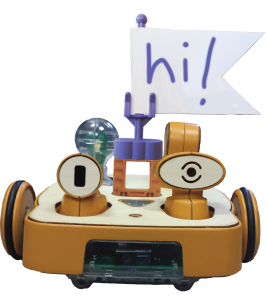An education professor explains that, with coaching and student-included PD, educators no longer worry about teaching with (or breaking!) high-tech tools.
We’ve all sat through meaningless professional development (PD). Whether it’s provided by someone so far removed from the classroom that they can’t relate to the demands today’s teachers face, or just something that could have been handled in an email. We would rather spend productive hours planning engaging projects or reviewing student work instead. At Maryville University, we’ve been using research to create effective, engaging PD that helps teachers implement new technologies and curricula that truly improve student learning. Since then, we’ve traveled to multiple districts replicating this model.
Our School of Education’s Center for Access and Achievement (CA2) conducts frequent PD in STEM, especially for pre-K–12 robotics. We’ve developed two effective models of professional development that work extremely well, both in terms of teacher engagement and learning, and in terms of student achievement. Here are some practical best practices to help any school district implement these two models, which are student-included PD (SIPD) and coaching.
Student-Included Professional Development (SIPD)
In our CREST-M (Children using Robotics for Engineering, Science, Technology, and Math) project, focused on creating STEM curricula using LEGO WeDo 2.0 robotics, we’ve had dozens of teachers and hundreds of students learn together. In the SIPD model, teachers work in the summers with small groups of students from their districts, going through the math-robotics curricula together, with an expert teacher there to help guide them.
It helps to have one teacher with expertise in robotics and a strong background in math education, along with 4–5 teachers learning the material and about 20 students split into small groups. The questions and challenges that arise are far easier to work out the first time with a small group than a large one. In this way, teachers learn the curriculum especially well and are completely ready to take their full classes through it during the school year. School administrators report very high implementation rates and teacher confidence. Pre- and post-assessment of the students also demonstrates very strong improvement in math.
Using Expert Coaches In Class
We’ve found individual coaching to be another very strong model of PD. For example, this year we worked with a diverse, high-poverty early childhood center on a grant-funded STEM project. We started with an hour of professional development just with teachers on the KIBO Robot at the onset of the school year. The real learning came later in the fall, when we made ourselves available for in-class coaching.
While teachers had attended PD on using robotics, having expert coaches available in their classrooms while they implemented the robotics platform for the first time was invaluable to their success. Our experts didn’t teach the kids, but were available to provide guidance when the teachers were implementing the robots.
Alleviating Common Fears
SIPD and coaching also have shown to help teachers overcome common fears associated with teaching new material and introducing new technology. Many teachers are afraid kids will break the robots. In some cases, it’s so bad that the teachers lock the robots in a closet and never let the kids use them!
I encourage schools to purchase robots and robotic kits designed for the classroom. Educational kits are often more heavy-duty and can withstand accidents without breaking. Both SIPD and coaching, provide opportunities for kids to accidently drop a robot and for teachers to see that sort of accident won’t derail the lesson or render the robot useless.
Teachers are also often afraid that they don’t know everything for which the robot can be programmed. I’ve been working with robotics for 15 years, and I don’t know all of the things they can do, either. It’s helpful for teachers to think about programming the robots less like solving an equation and more like creative writing. I can find the answer to almost any equation, but I never know what a student will dream of writing. There are unlimited possibilities.
PD doesn’t have to be a pain. SIPD and coaching can improve teacher quality and student learning. Teachers have no need to fear robotics, and these methods help them see a pathway to success.
Steve Coxon, PhD, is an associate professor and executive director for the Center for Access and Achievement at Maryville University.





